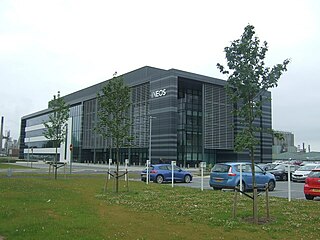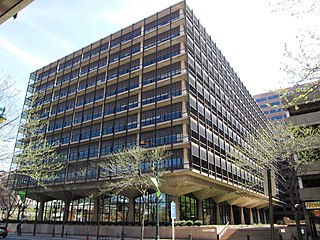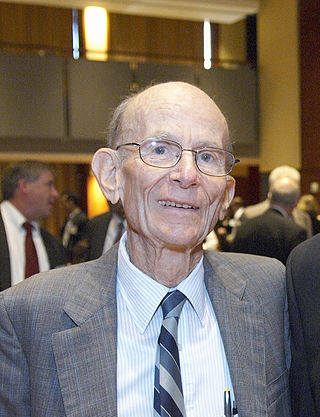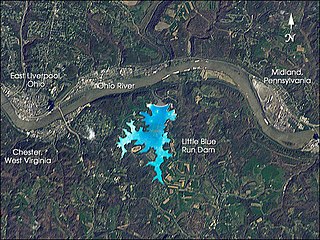
Deer Park is a city in the U.S. state of Texas within the Houston–Sugar Land–Baytown metropolitan area. The city is located in Harris County and is situated in Southeast Harris County. At the 2020 U.S. census, the population of Deer Park was 34,495.

The Bhopal disaster or Bhopal gas tragedy was a chemical accident on the night of 2–3 December 1984 at the Union Carbide India Limited (UCIL) pesticide plant in Bhopal, Madhya Pradesh, India. In what is considered the world's worst industrial disaster, over 500,000 people in the small towns around the plant were exposed to the highly toxic gas methyl isocyanate (MIC). Estimates vary on the death toll, with the official number of immediate deaths being 2,259. In 2008, the Government of Madhya Pradesh paid compensation to the family members of 3,787 victims killed in the gas release, and to 574,366 injured victims. A government affidavit in 2006 stated that the leak caused 558,125 injuries, including 38,478 temporary partial injuries and approximately 3,900 severely and permanently disabling injuries. Others estimate that 8,000 died within two weeks, and another 8,000 or more have since died from gas-related diseases.

Hydrogen sulfide is a chemical compound with the formula H2S. It is a colorless chalcogen-hydride gas, and is poisonous, corrosive, and flammable, with trace amounts in ambient atmosphere having a characteristic foul odor of rotten eggs. Swedish chemist Carl Wilhelm Scheele is credited with having discovered the chemical composition of purified hydrogen sulfide in 1777.

The Dow Chemical Company is an American multinational corporation headquartered in Midland, Michigan, United States. The company is among the three largest chemical producers in the world. It is the operating subsidiary of Dow Inc., a publicly traded holding company incorporated under Delaware law.

Ethanethiol, commonly known as ethyl mercaptan, is an organosulfur compound with the formula CH3CH2SH. is a colorless liquid with a distinct odor. Abbreviated EtSH, it consists of an ethyl group (Et), CH3CH2, attached to a thiol group, SH. Its structure parallels that of ethanol, but with sulfur in place of oxygen. The odor of EtSH is infamous. Ethanethiol is more volatile than ethanol due to a diminished ability to engage in hydrogen bonding. Ethanethiol is toxic in high concentrations. It occurs naturally as a minor component of petroleum, and may be added to otherwise odorless gaseous products such as liquefied petroleum gas (LPG) to help warn of gas leaks. At these concentrations, ethanethiol is not harmful.

Morton Salt is an American food company producing salt for food, water conditioning, industrial, agricultural, and road/highway use. Based in Chicago, the business is North America's leading producer and marketer of salt. It is a subsidiary of holding company Stone Canyon Industries Holdings, Inc.

Ineos Group Limited is a British multinational conglomerate headquartered and registered in London. As of 2021, it is the fourth largest chemical company in the world, with additional operations in fuel, packaging and food, construction, automotive, pharmaceuticals, textiles, and professional sports. Ineos is organised into about 20 standalone business units, each with its own board and operating almost entirely independently, although founder Jim Ratcliffe, who owns a controlling interest, and his associates, who collectively own a minority share, sit on their boards occasionally.

Triton X-100 is a nonionic surfactant that has a hydrophilic polyethylene oxide chain and an aromatic hydrocarbon lipophilic or hydrophobic group. The hydrocarbon group is a 4-(1,1,3,3-tetramethylbutyl)-phenyl group. Triton X-100 is closely related to IGEPAL CA-630, which might differ from it mainly in having slightly shorter ethylene oxide chains. As a result, Triton X-100 is slightly more hydrophilic than Igepal CA-630 thus these two detergents may not be considered functionally interchangeable for most applications.

Olin Corporation is an American manufacturer of ammunition, chlorine, and sodium hydroxide. The company traces its roots to two companies, both founded in 1892: Franklin W. Olin's Equitable Powder Company and the Mathieson Alkali Works. Accidents at Olin chemical plants have exposed employees and nearby residents to health hazards.
Otto Karl Julius Röhm was one of the founders and a longtime president of the Röhm und Haas chemical company which became later in the USA the Rohm and Haas and in Germany the Röhm GmbH.
Rubbertown is a neighborhood of Louisville, Kentucky, located along the Ohio River. During World War II, it became the home of many industrial plants which remained after the war and led to its name. Its largest businesses include American Synthetic Rubber, Borden Chemical, DuPont Dow Elastomers, Noveon, Dow Chemical, and Zeon Chemicals.

Andrew N. Liveris is an Australian former CEO and chairman of The Dow Chemical Company of Midland, Michigan. Liveris served as a member of Dow's board of directors since February 2004, CEO since November 2004 and was elected as chairman of the board effective 1 April 2006. Liveris became CEO in 2004 after holding the position of chief operating officer (COO). Afterwards he served as executive chairman of DowDuPont. He is chairman of the board of Lucid Motors.

The Rohm and Haas Corporate Headquarters in Philadelphia, Pennsylvania, United States was built as the headquarters for the former chemical manufacturing company Rohm and Haas. Completed in 1964, the building was the first private investment for the urban renewal of the Independence Mall area. Only two blocks from Independence Hall the building, designed by Pietro Belluschi and George M. Ewing Co., was lauded for its respect to the nearby park and historical buildings. Philadelphia's city planners praised the Rohm and Haas Corporate Headquarters as a standard for all redevelopment buildings.

Rajiv L. Gupta is an Indian-American businessman, the current chairman of Aptiv, an auto parts company, and a former executive with Rohm and Haas, a manufacturer of specialty chemicals.
Arkema S.A. is a publicly listed, multi-national manufacturer of specialty materials, headquartered in Colombes, near Paris, France. It has three specialty materials segments ; adhesives, advanced materials and coatings. A further segment covers chemical intermediates.

John Charles Haas was an American businessman and philanthropist, at one time considered the second richest man in Philadelphia. He was the chairman of global chemical company Rohm and Haas from 1974 to 1978. Under his leadership, the family's William Penn Foundation became a $2 billion grantmaking institution, ranking as one of the largest such institutions in the United States.
The Chemical Industry Medal is an annual American award given to an industrial chemist by the Society of Chemical Industry America. The medal has been awarded since 1933, when it replaced the Grasselli Medal. It was initially given to "a person making a valuable application of chemical research to industry. Primary consideration shall be given to applications in the public interest." As of 1945, the criterion became "a person who ... has rendered conspicuous service to applied chemistry." More recently it has been awarded "for contributions toward the growth of the chemical industry."

Little Blue Run Lake or Little Blue Run is the largest coal ash impound in the United States. FirstEnergy owns the site, located in Western Pennsylvania and parts of the Northern Panhandle of West Virginia, and has disposed of billions of gallons of coal waste into the body of water. Several court cases have been brought against the company as a result of the damage caused by the company's practices at the site.
Catherine T. Hunt is an American chemist. In 2007, she served as the president of the American Chemical Society (ACS). She was a director at Dow Chemical Company.
DuPont de Nemours, Inc., commonly shortened to DuPont, is an American multinational chemical company first formed in 1802 by French-American chemist and industrialist Éleuthère Irénée du Pont de Nemours. The company played a major role in the development of Delaware and first arose as a major supplier of gunpowder. DuPont developed many polymers such as Vespel, neoprene, nylon, Corian, Teflon, Mylar, Kapton, Kevlar, Zemdrain, M5 fiber, Nomex, Tyvek, Sorona, Corfam and Lycra in the 20th century, and its scientists developed many chemicals, most notably Freon (chlorofluorocarbons), for the refrigerant industry. It also developed synthetic pigments and paints including ChromaFlair.















